Test Driving the Volkswagen Golf R (Golf 7): What Sets It Apart from the Standard Golf?
公開日:2022.02.03
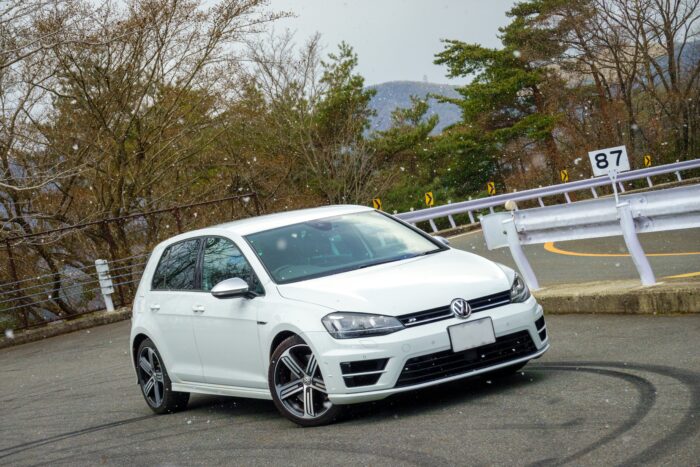
Volkswagen Golf
There’s a car we once had at home that I deeply regretted letting go. Even now, my wife and I often say, “That car was really well made, wasn’t it?”
That car was the Volkswagen Golf.
Back then, I drove the Golf 7 Early Model ALLSTAR, a special edition that was a slightly upgraded version of the 1.2 base grade.
It was an incredibly versatile car, perfect for everything from daily commuting and shopping to family trips. It truly embodied the compact hatchback “standard meter” in performance—engine torque, handling, brakes, rigidity, and ride comfort all scored top marks.
I also drove many domestic cars from the same class and era that automotive critics loudly claimed had “surpassed or caught up to the Golf!” but personally, I still felt there was a significant gap. That’s how much I believe the Golf is a car that refines its fundamental performance without compromise.
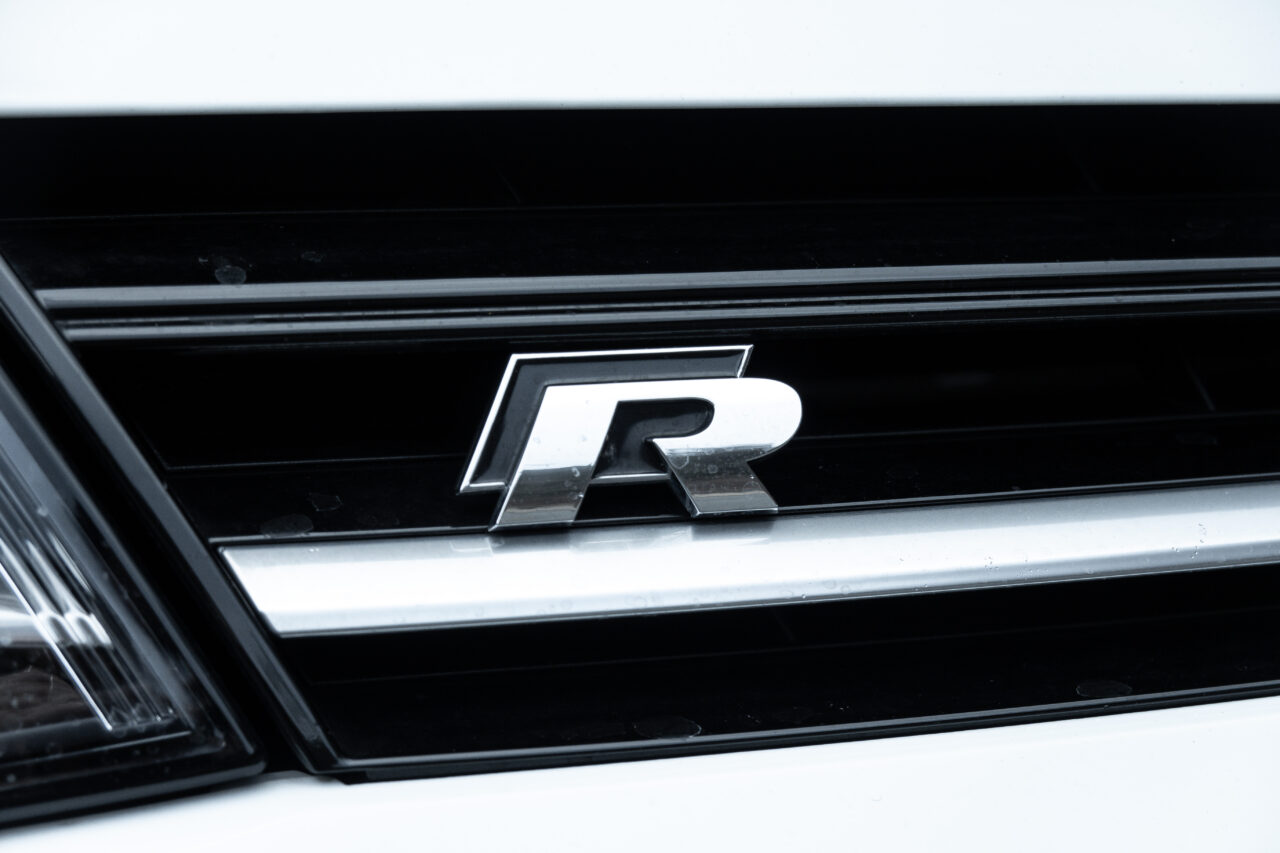
Golf R
This time, I had the opportunity to test drive the top-tier, or rather the most powerful Golf—the Golf R (Golf 7 Early Model).
Compared to the Golf I used to drive, the power is roughly doubled. It delivers a maximum output of 280ps/5100-6500rpm and peak torque of 38.7kgm (380Nm)/1800-5100rpm. This power is driven through the fifth-generation 4MOTION system equipped with a Haldex coupling.
When I hear “Haldex coupling,” I think of many FF-based vehicles where the rear wheels only get power after the front wheels slip—a sort of “pseudo 4WD.” But this generation can vary from 0:100 front-to-rear torque distribution and even predicts slip to proactively send power to the rear wheels.
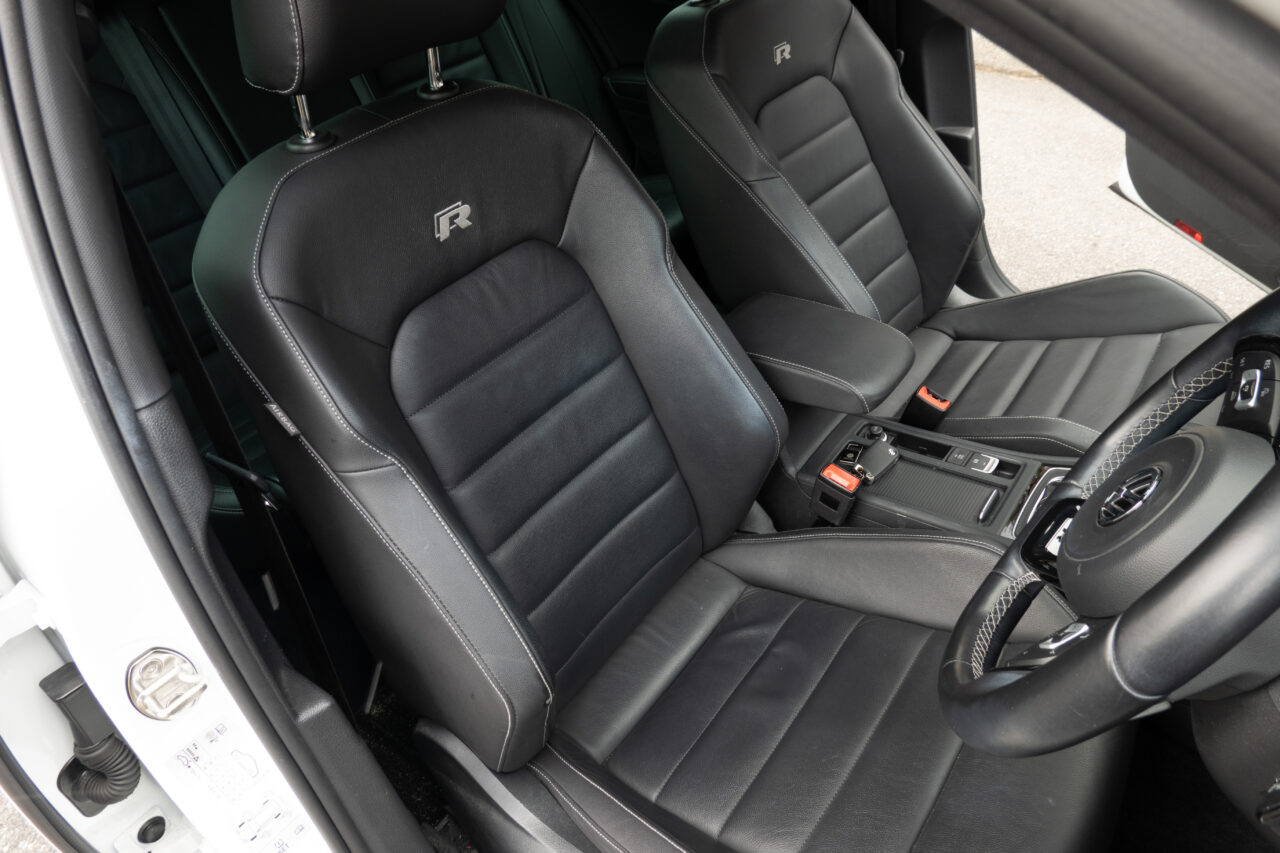
Starting the engine is relatively quiet, with just a slightly more aggressive tone than a regular Golf. The initial drive feels perfectly normal. The roughness of the road surface is more distinctly communicated than in the base Golf.
While the base Golf feels like it glides smoothly, this one offers a strong tire contact feeling, as if you’re firmly pressing down and powering through the road.
That said, once you get up to speed, that awareness fades, and it feels like you’re driving a very comfortable, ordinary compact car. The only difference is that the exhaust note is noticeably more aggressive, with a clear, low rumble.
Personally, I find this quite pleasant, but those expecting quietness—like some wives—might not appreciate it.
Impressions on Winding Roads
In Normal mode, cornering grip is a step or two above the base Golf. The front end turns in well and corners without slipping—just like a sports car.
The driving feel is very similar to the Golf 7 GTI I briefly experienced before.
When you press the accelerator further, the Golf R suddenly reveals a glimpse of its true capability. Just past 3000rpm, the torque surges dramatically. While the base Golf has a flat torque curve, the Golf R’s turbo boost creates an impressive torque spike.
You feel your body pressed firmly into the seat—a torque sensation you simply can’t experience in the base Golf.
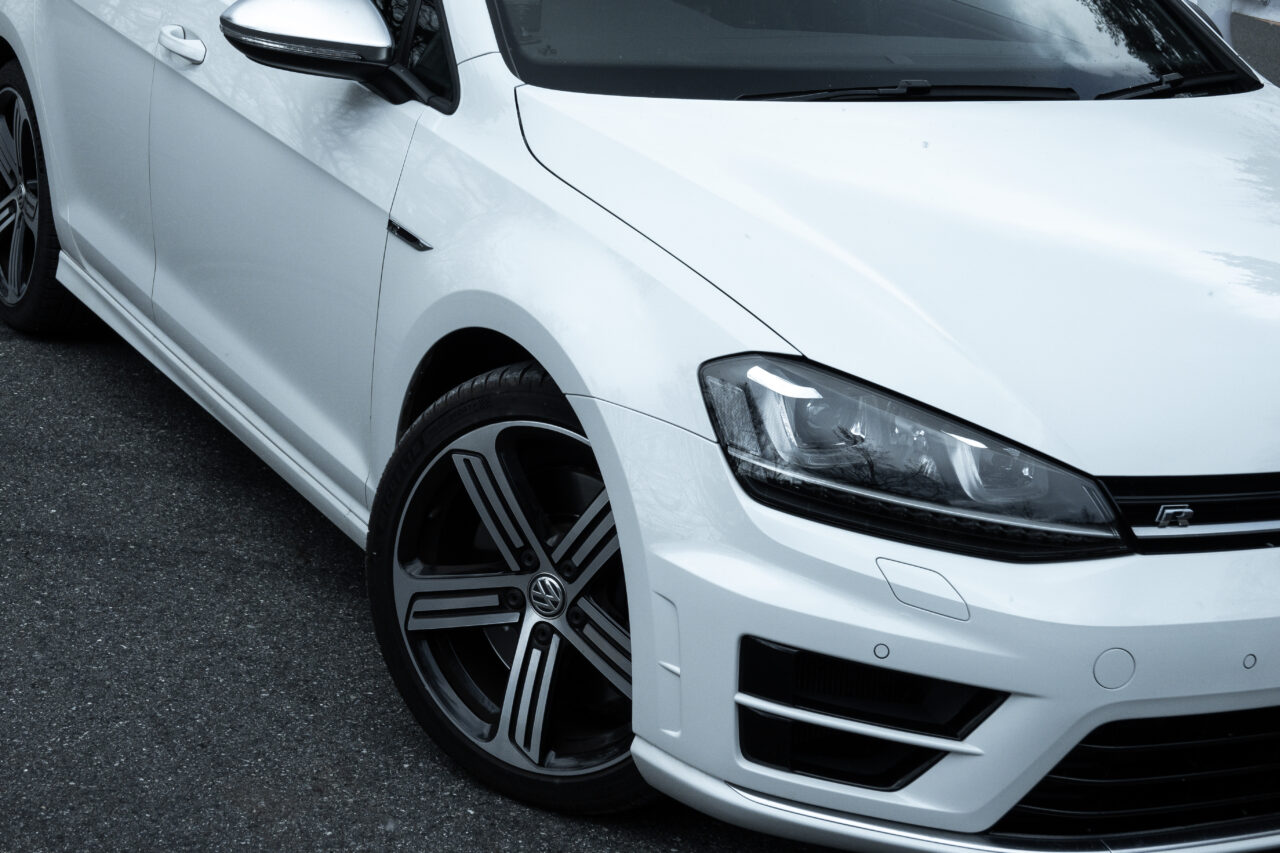
As I passed through several curves, I muttered, “It really is fast, isn’t it?” but up to this point, it didn’t feel like a particularly “fun” car.
It felt like driving a high-performance GT car, but with few elements that emotionally engage the driver.
True Potential Unleashed in Race Mode
Midway, I switched from Normal to the next level—Race mode. The suspension stiffened noticeably, and the chassis feel changed instantly. It felt as if the ride height dropped, with the tires gripping the road like they were glued on.
This change is quite obvious and anyone would notice it.
The 6-speed DSG holds higher revs, and this is where the Golf R truly shines.
I adjusted my seat position and switched the transmission to manual paddle control.
Shifting from 2nd to 3rd gear with the paddle produced a sharp “pop!” sound, and the shift completed instantly, bringing a smile to my face. This is an impressively quick shift—no wonder Volkswagen is a pioneer of dual-clutch transmissions.
It’s far superior to the shifts in some supercars. The excellent response and shift sound really excite the driver. Of course, there’s no unpleasant shift shock. The rev-matching on downshifts is also impressive.
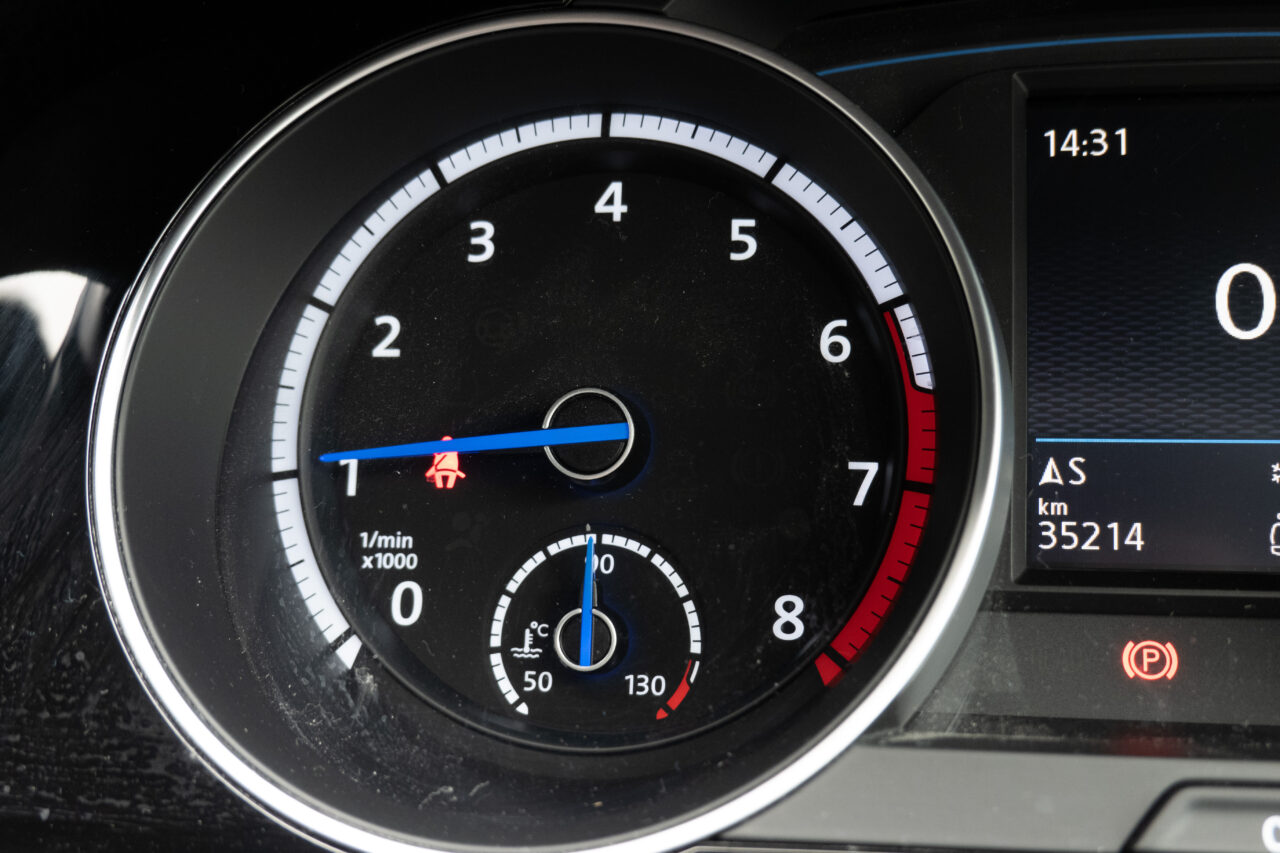
Keeping the tachometer needle around 12 o’clock, I used the paddle shifters to power through uphill corners. At this rev range, the turbo boost is always active, making it very manageable.
There’s plenty of power without being overwhelming, so you can fully enjoy revving it even on Japan’s narrow mountain passes.
The stability of the 4WD system is outstanding. You can confidently push through corners on cold, low-traction winter roads. Once you see the corner exit, just step on the gas—the 4MOTION system takes care of the rest.
Driving in Race mode was a lot of fun. It made me want to keep driving longer. This is a big contrast to the straightforward feel of Normal mode. I believe the true essence of the Golf R lies in this “Race mode.”

In Other Words, the Golf R Is a Mini ‘Carrera 4’
Later, I discussed with my wife, and given her taste in cars, the Golf R might be just perfect for her. It combines all-weather GT performance with high comfort, peace of mind, and even driving enjoyment. It’s basically a mini ‘Carrera 4.’
If you want to experience driving similar to a Carrera 4 (not exactly the same, of course) at a more affordable price, the Golf R comes highly recommended. Its 4WD control, engine, suspension, DSG shifting, and body rigidity are all top-notch and nothing to be ashamed of.
That’s the Golf for you. A first-class industrial product that seriously hones its fundamental driving performance without cutting corners. I think everyone should try the ultimate Golf R grade at least once.
このブログが気に入ったらフォローしてね!


Comment ( 0 )
Trackbacks are closed.
No comments yet.